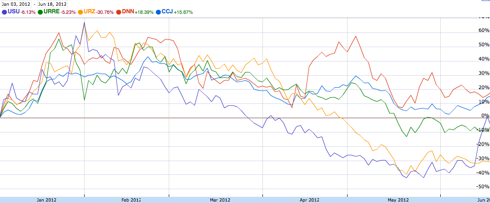Last week, Prime Minister Yoshihiko Noda ended Japan's month-long freeze on nuclear power. On June 16, after the Prime Minister met with three Cabinet ministers sharing nuclear approval authority, he stated that two reactors at Kansai Electric Power's Ohi nuclear plant could be put into operation. The Ohi plant serves the second-largest urban region within Japan, and Kansai immediately began working towards starting the reactors, estimating that the first should be up running in early July and the second by mid-July.
 Japan will slowly reopen most of the nuclear plants that provided almost one-third of the nation's energy, before being shut down after the meltdowns at Tokyo Electric Power's Fukushima station in March of 2011. The decision to restart nuclear power usage follows a deal between political parties that also included a consumption tax increase. The nuclear power restart is still unpopular with many Japanese people, but many industrial businesses have claimed they require the power.
Japan will slowly reopen most of the nuclear plants that provided almost one-third of the nation's energy, before being shut down after the meltdowns at Tokyo Electric Power's Fukushima station in March of 2011. The decision to restart nuclear power usage follows a deal between political parties that also included a consumption tax increase. The nuclear power restart is still unpopular with many Japanese people, but many industrial businesses have claimed they require the power.This could be the start of something in the potential turnaround for uranium miners. Japan was formerly one of the largest users of nuclear power, and its moratorium on the use had a significant reduction in the overall demand for the commodity. The last year was exceptionally negative for uranium miners and the radioactive element itself. Beyond Japan's actions, Germany added that it planned to phase out nuclear power production. Japan's ramping up of its sizable nuclear power development should help buoy demand for uranium, and also help stabilize or increase its price.
After a serious surge to start off the year, where several uranium producers appreciated by more than 60% in January, most have since been stuck in their state of gradual decline that accelerated when the broader equity commodity markets also began to decline.
Emerging market demand trends for uranium look strong, with both China and India announcing multi-year plans to develop nuclear power infrastructure. China plans to increase its nuclear capacity eight-fold by the end of the decade and India plans to increase its production thirteen-fold. Other nations within Asia and Southeast Asia could follow their lead. If this were to happen, emerging market demand would likely replace and even surpass current first-world demand for uranium. Natural gas is not a cheap option in Asia.
Few companies are substantially related to uranium, but examples include Cameco (CCJ), Denison Mines (DNN), Uranerz Energy (URZ), Uranium Resources (URRE) and USEC (USU). Below is a year-to-date performance comparison chart for the group.
READ MORE...

No comments:
Post a Comment
This is an unmoderated blog. Please be professional and respectful as you post.